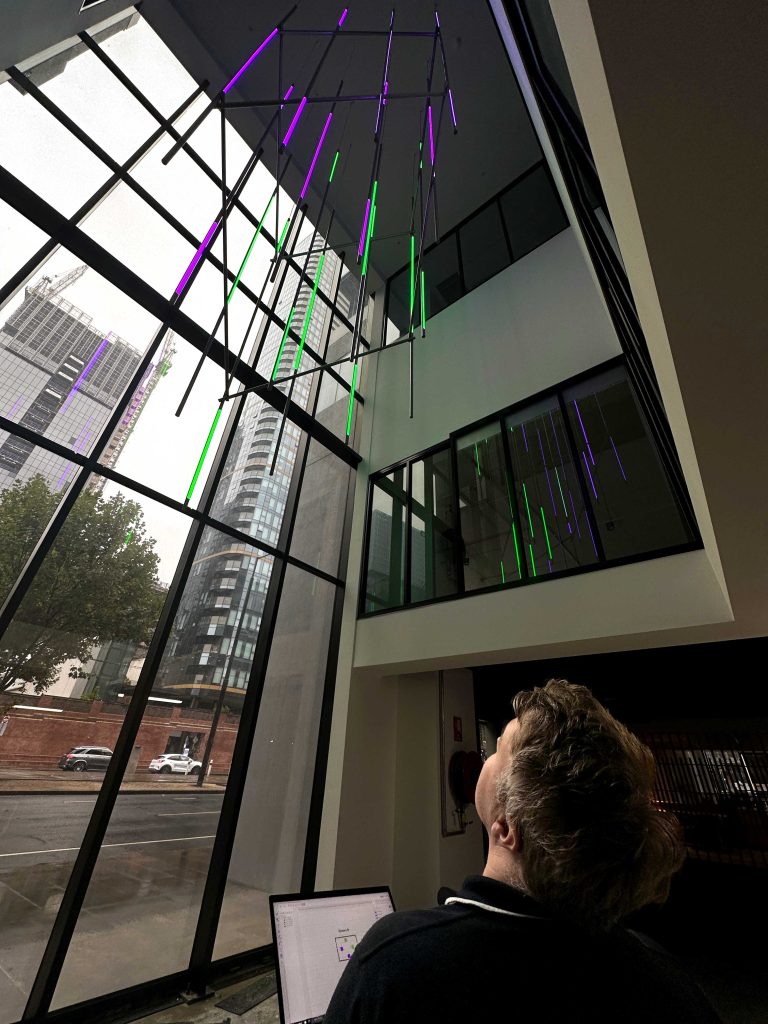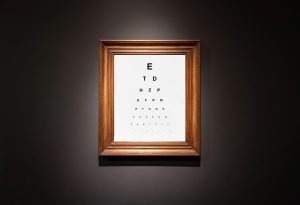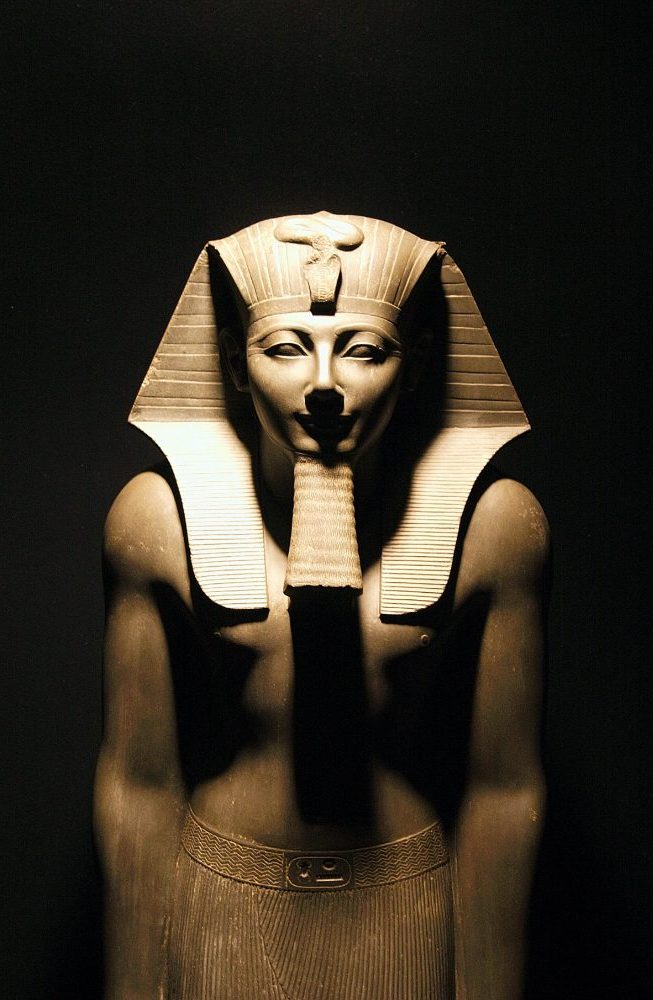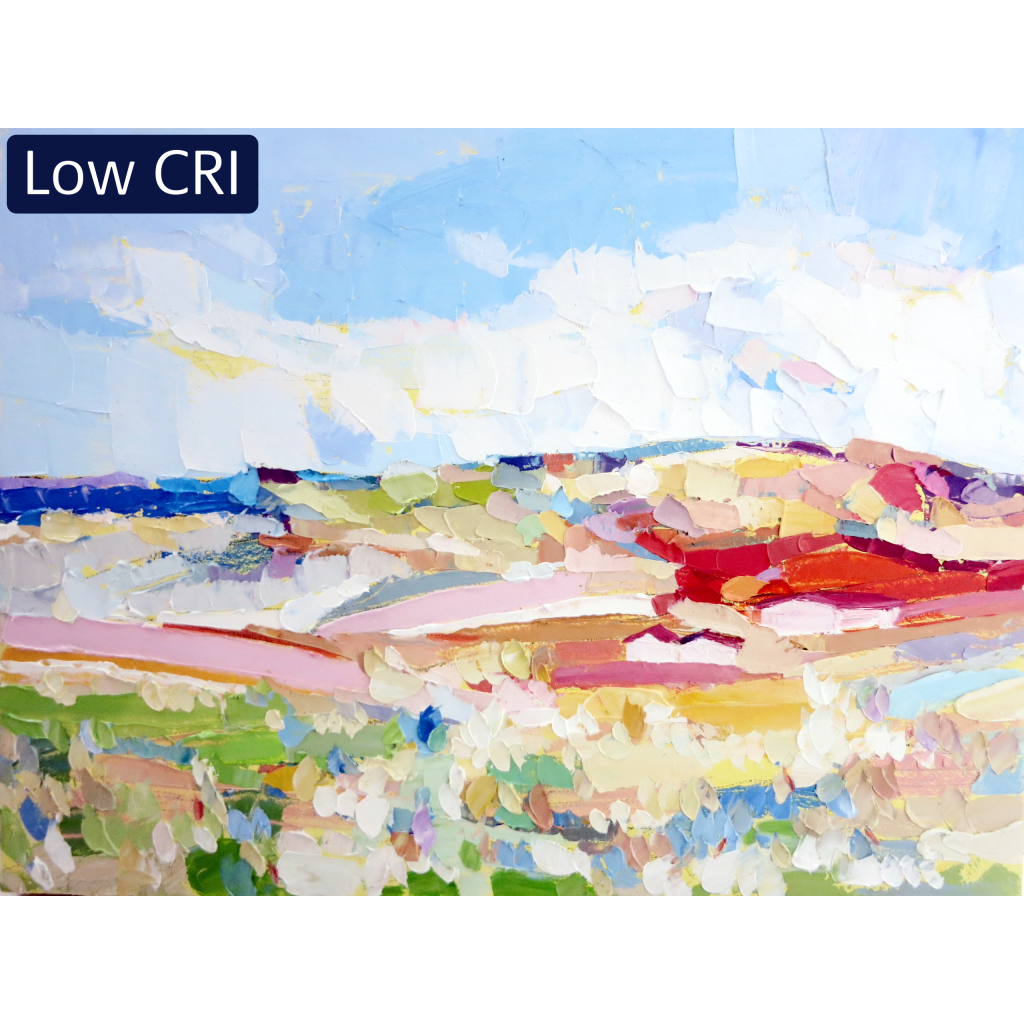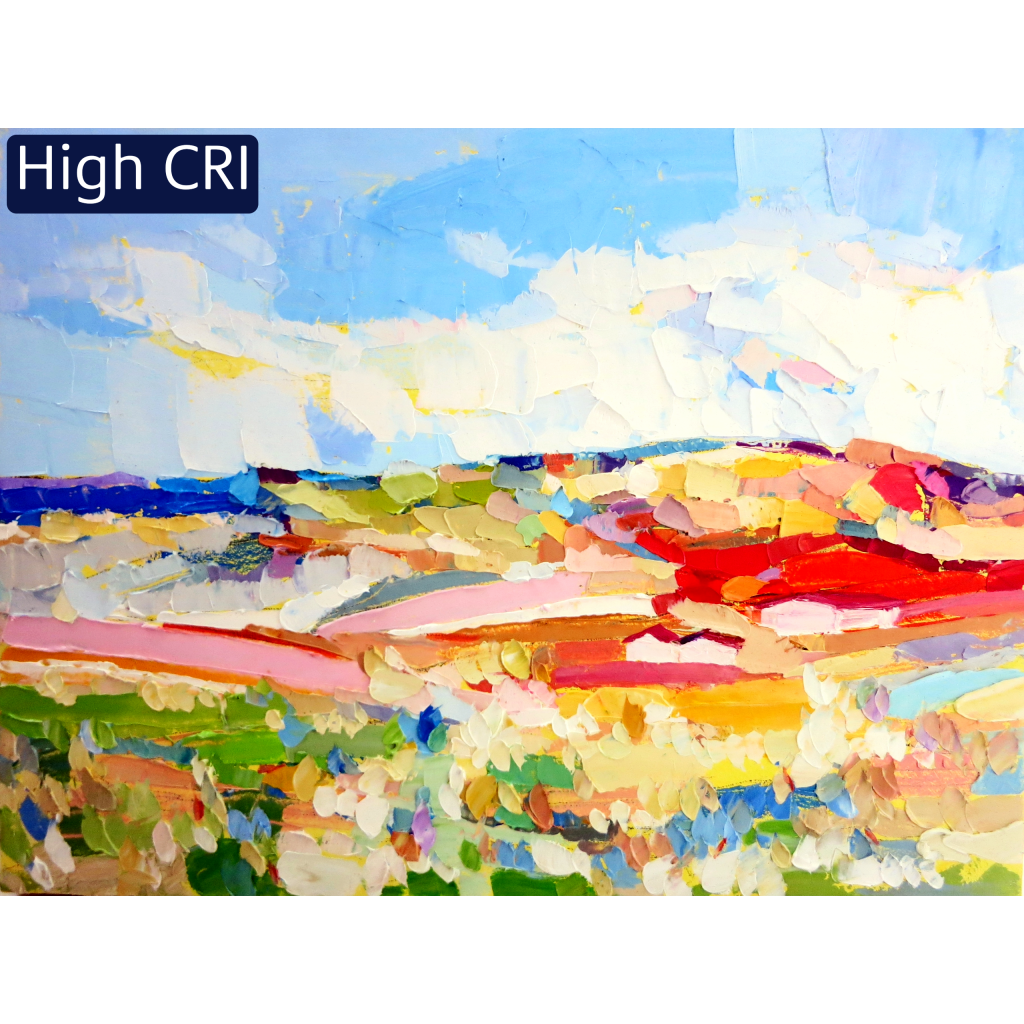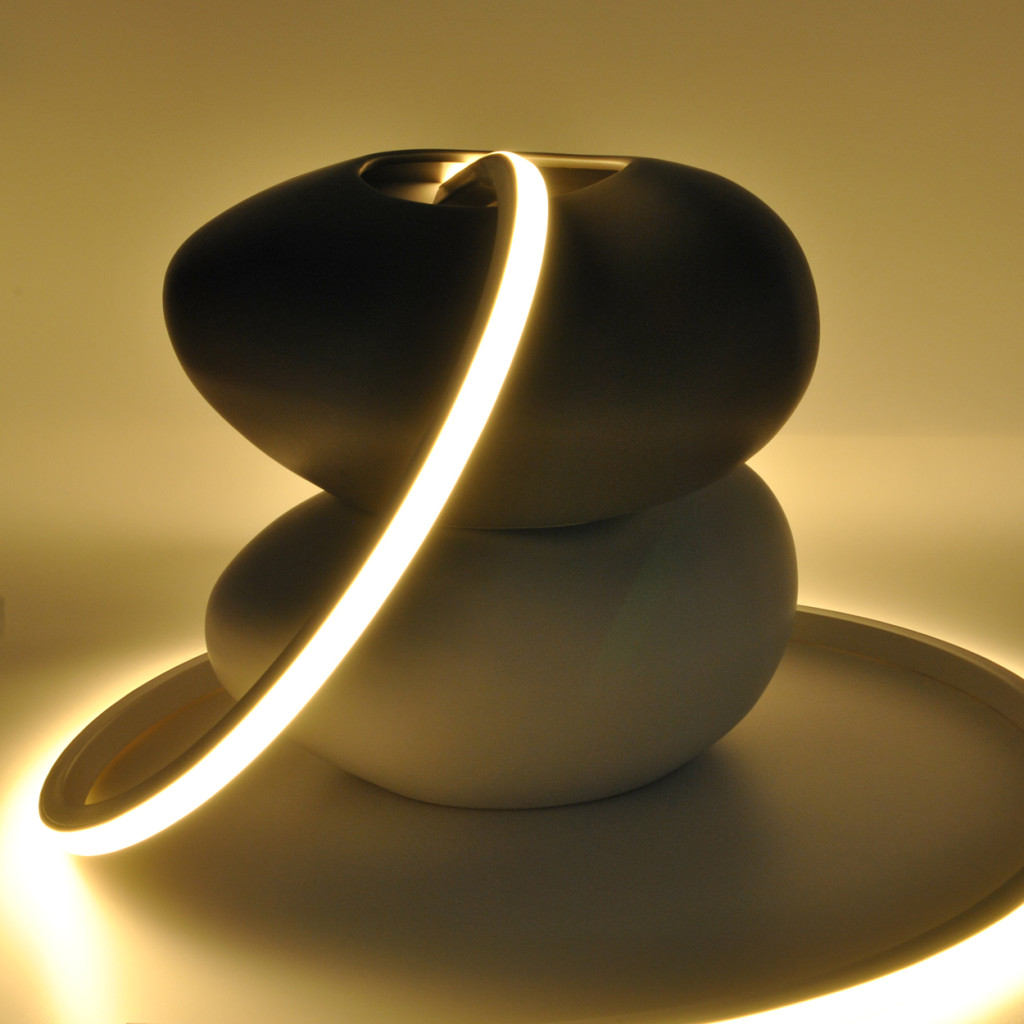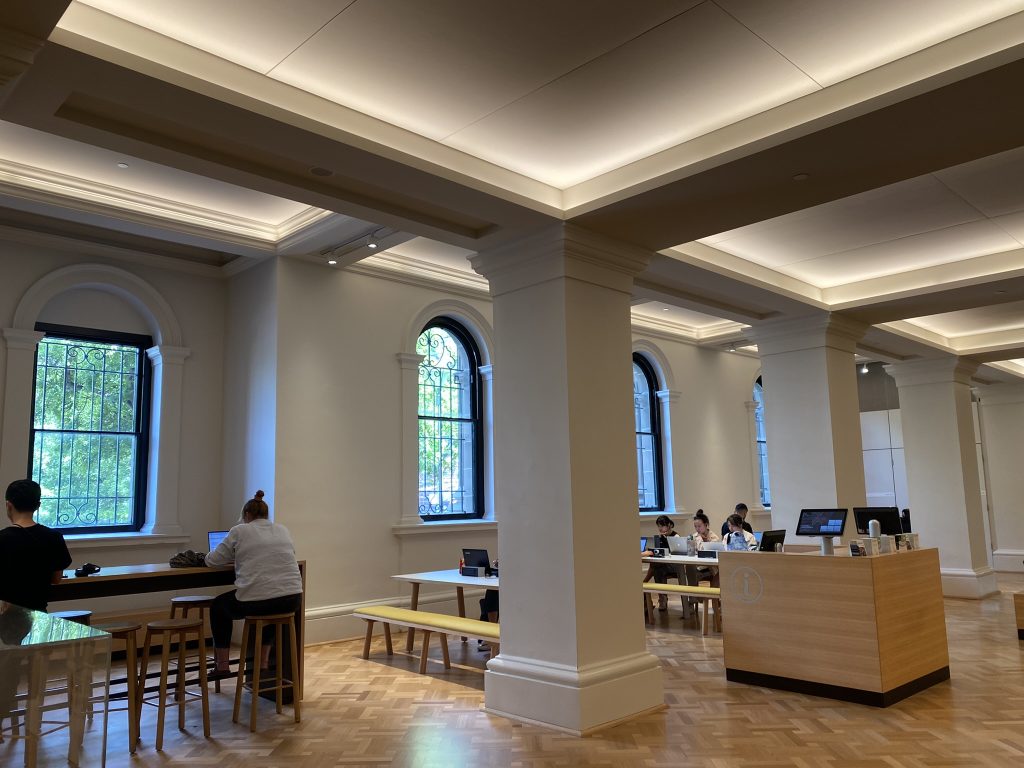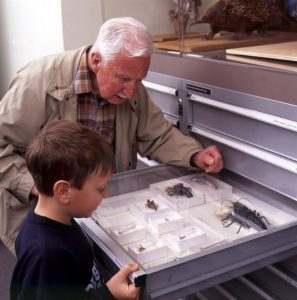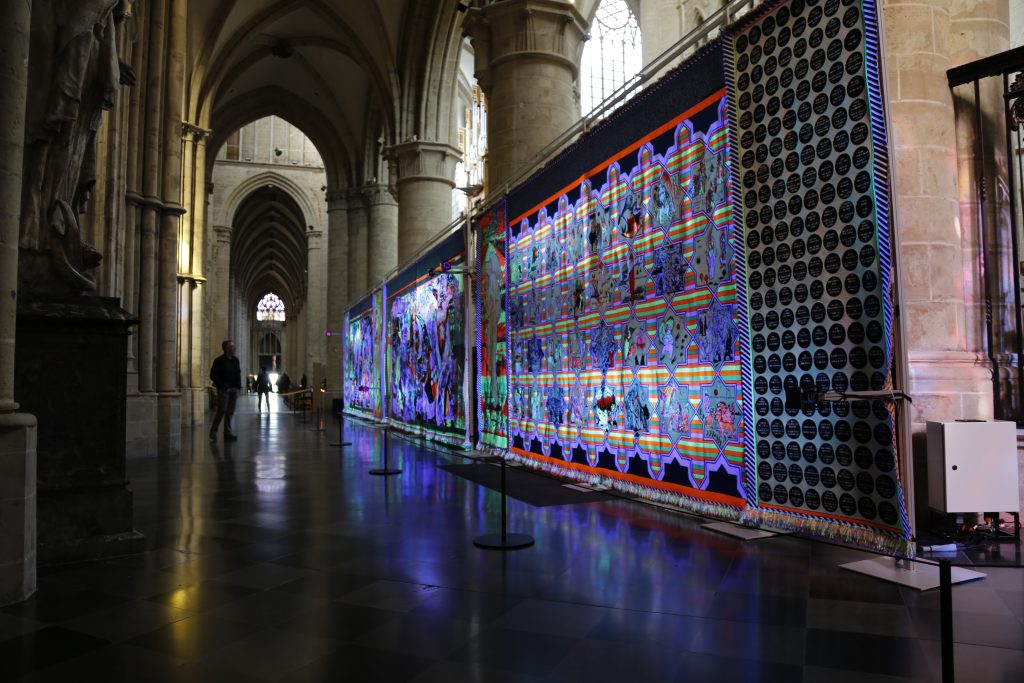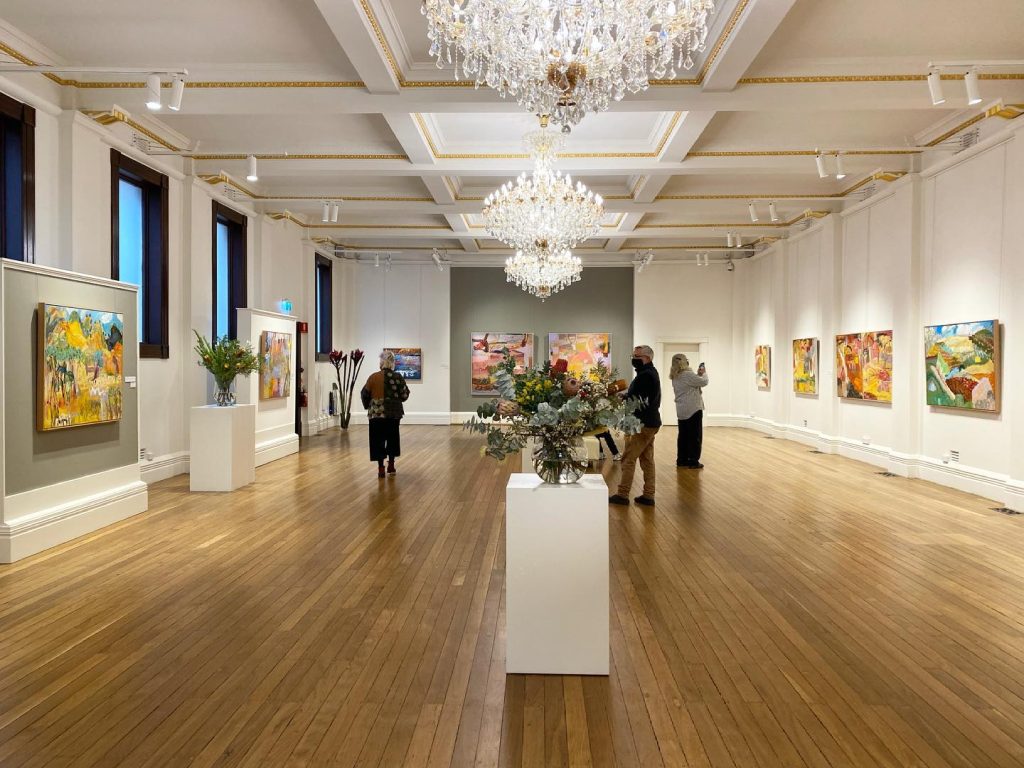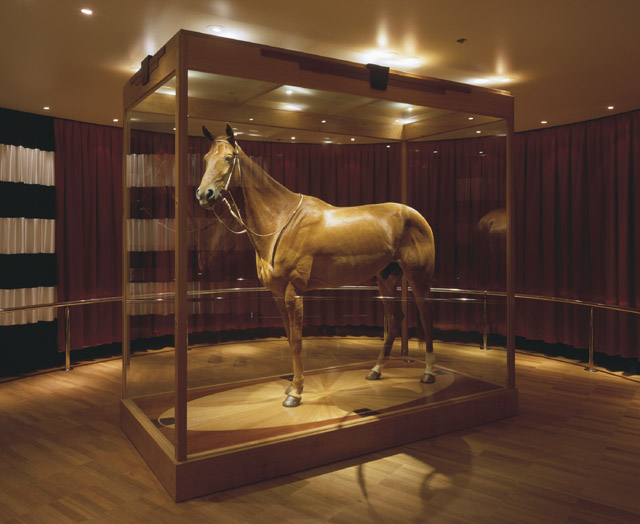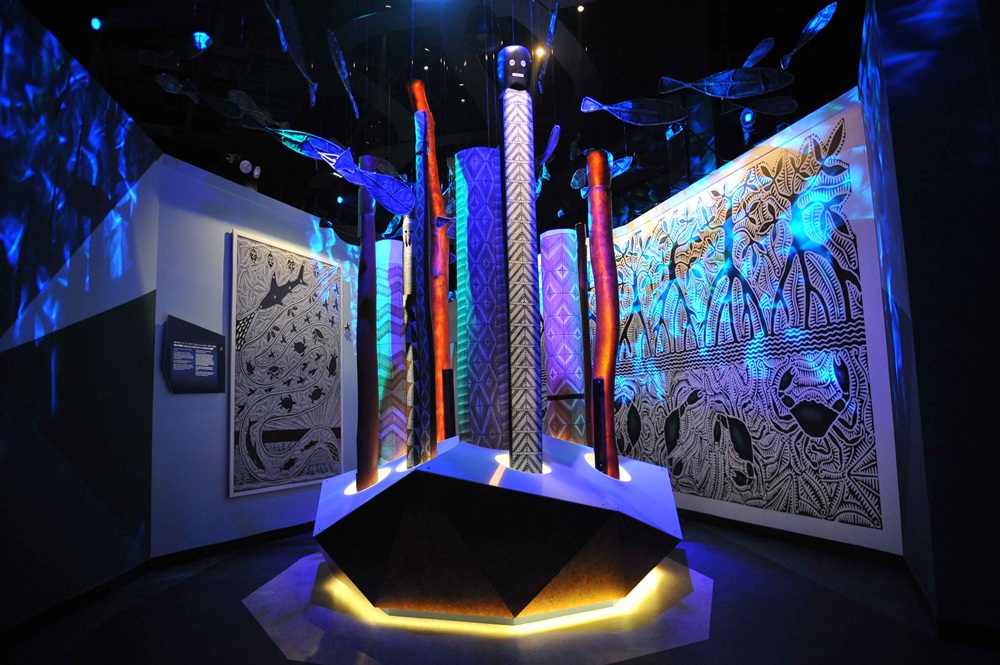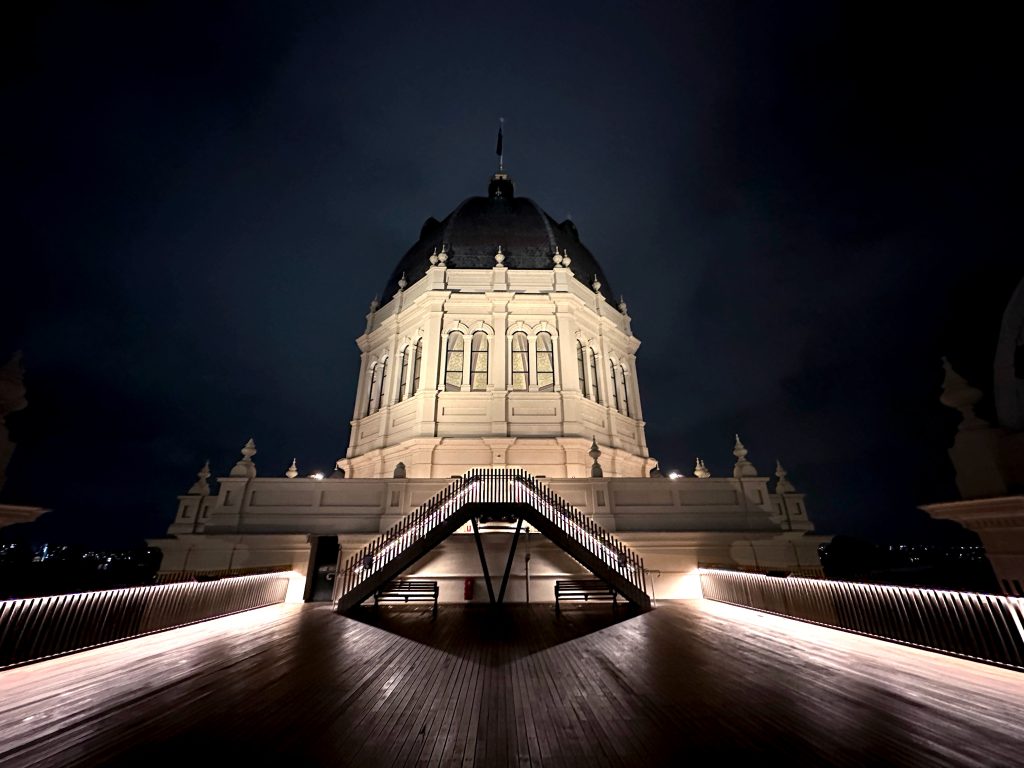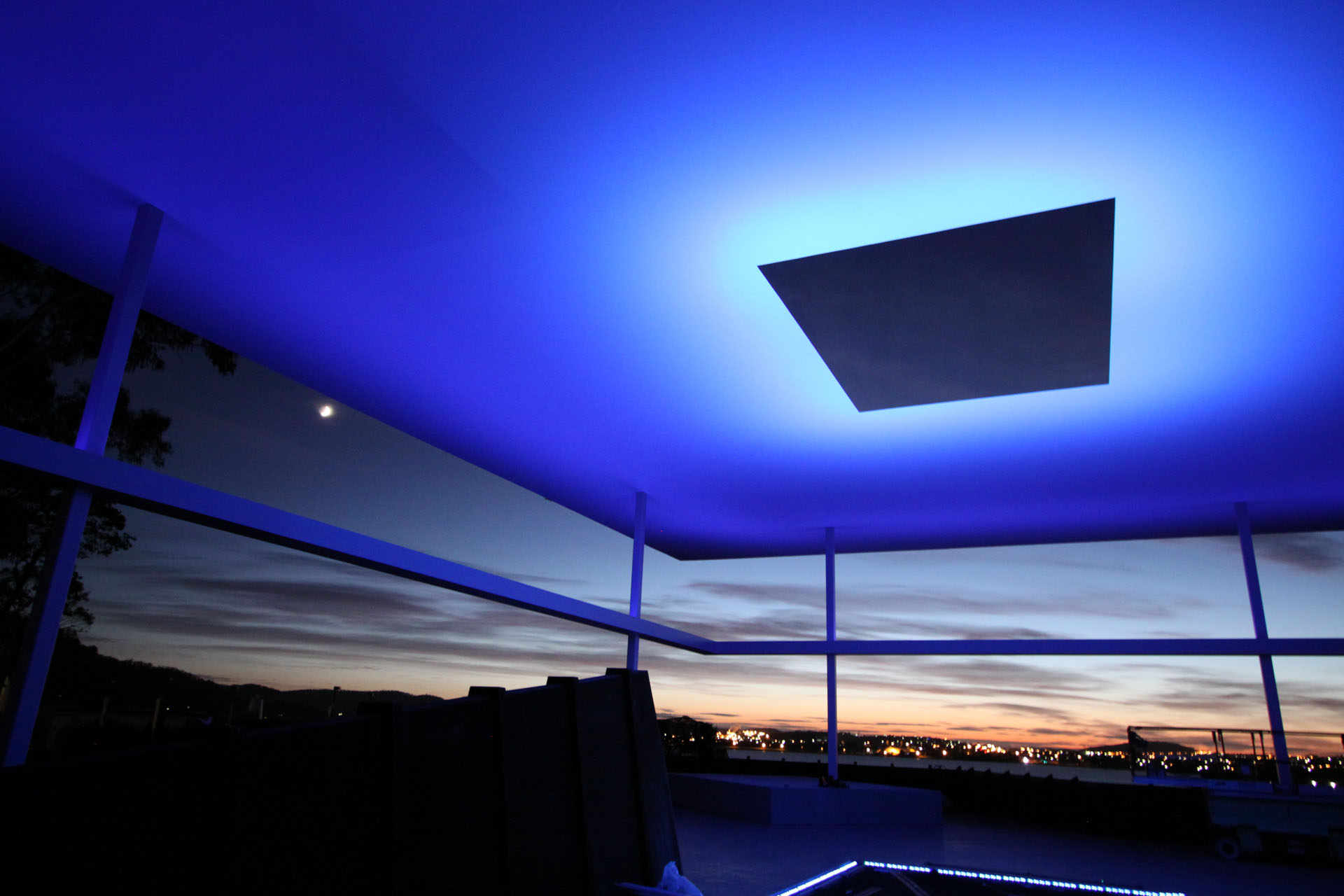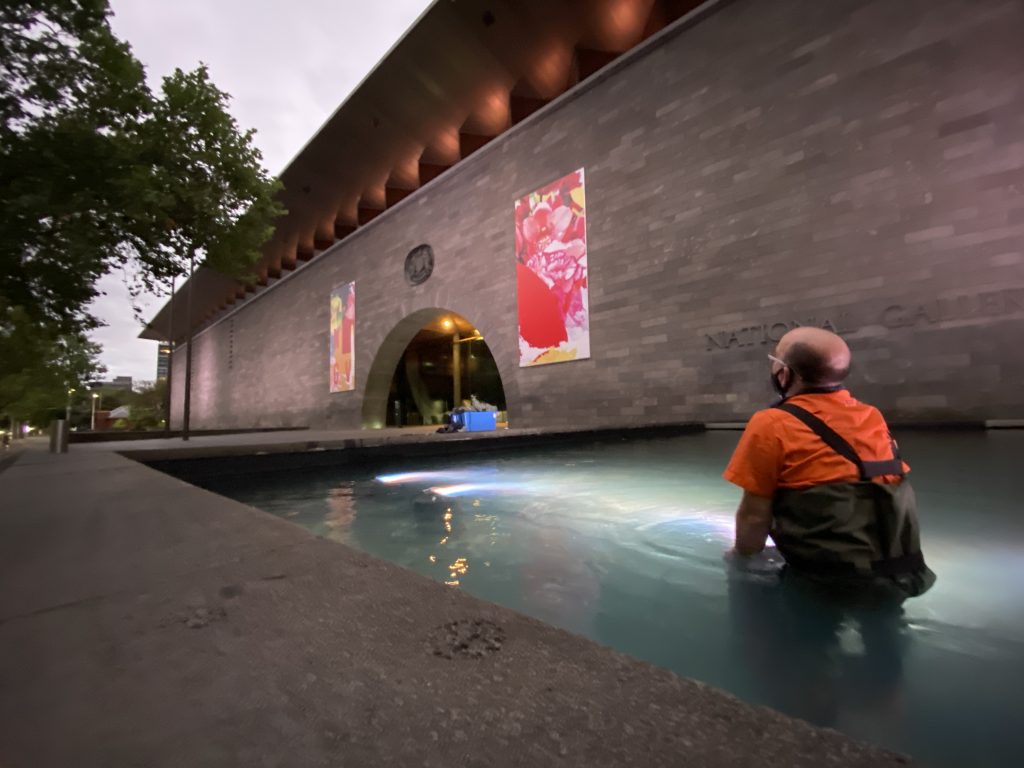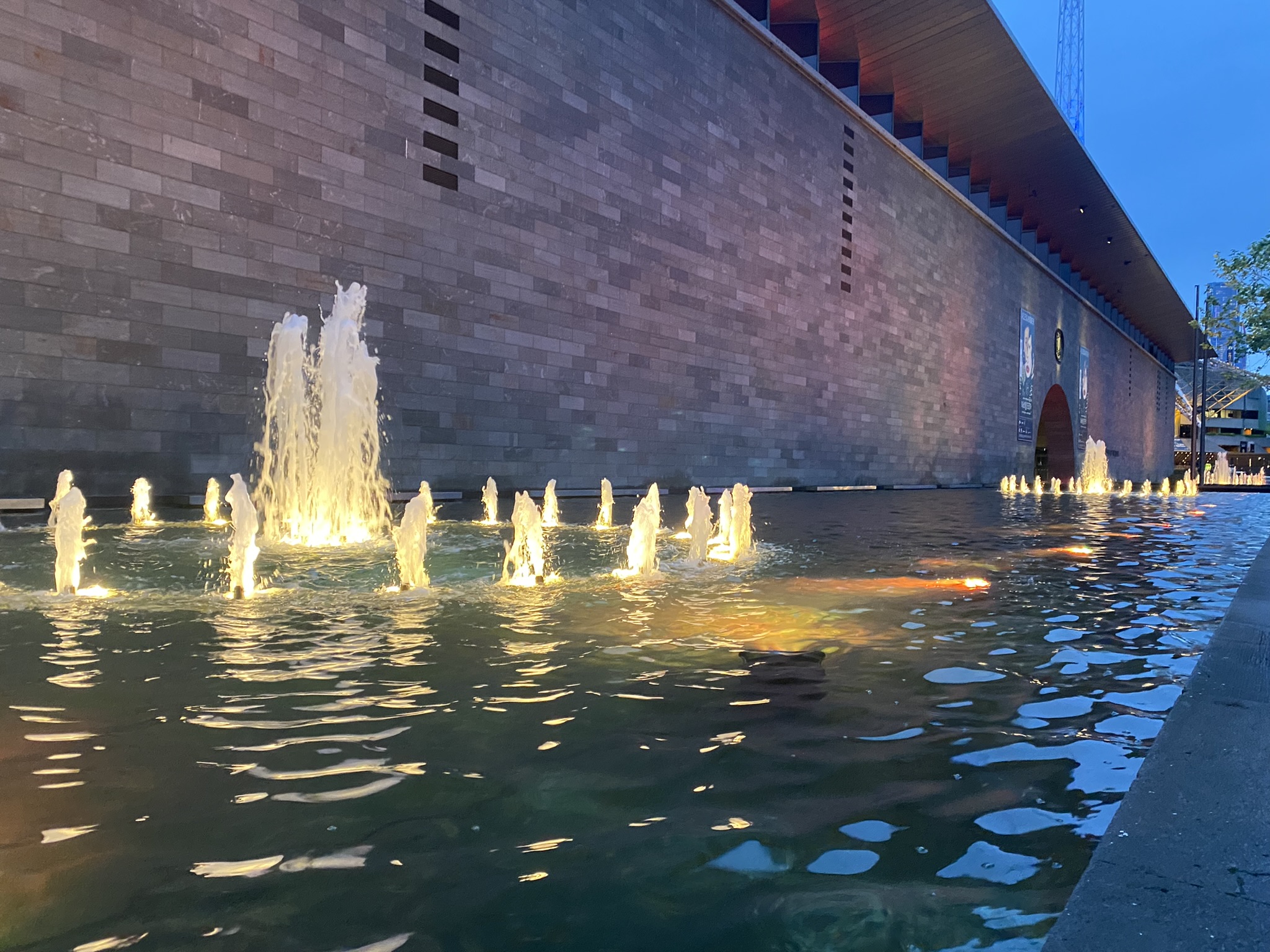Museums and galleries present specific lighting challenges – Lightmoves has the solutions
Lightmoves brings over 34 years of expertise in feature lighting, lighting control, and theatrical technologies, making us a trusted partner in enhancing exhibition spaces such as museums and galleries. These spaces play multifaceted roles: they serve as exhibition venues, where showcasing artwork and artefacts effectively requires inventive and adaptable approaches to reflect new curatorial visions and collections. Lightmoves understands the dynamic nature of these environments, where static rooms are reinvented to meet evolving needs while maintaining their core purpose of showcasing cultural treasures.
Beyond exhibition, museums and galleries are vital public buildings that must efficiently manage large visitor volumes while ensuring accessibility for all. Our solutions are designed not only to illuminate and accentuate exhibits but also to facilitate smooth visitor flow and accommodate diverse accessibility requirements. We recognize the importance of creating engaging environments that attract and sustain public interest, ensuring these spaces remain modern, relevant, and inspiring as tourism hubs.
Moreover, as storage and conservation centres, museums and galleries rely on precise lighting solutions to safeguard valuable and delicate pieces over extended periods. Lightmoves specializes in implementing lighting systems that minimize damage and optimize preservation efforts, thereby supporting the longevity and integrity of cultural artifacts.
In addition to their cultural roles, these institutions often function as places of commerce, requiring thoughtful display lighting that enhances merchandise appeal while maintaining a welcoming atmosphere to retain visitors. Lightmoves has a proven track record in creating inviting retail spaces within cultural settings, ensuring that our lighting solutions not only highlight exhibits but also contribute to a positive visitor experience.
Our extensive portfolio includes notable projects at esteemed institutions such as the National Gallery of Victoria, The Melbourne Museum, Scienceworks, and the Shrine of Remembrance. At Lightmoves, our commitment to delivering high-quality, reliable, and sustainable lighting solutions remains unparalleled, reflecting our dedication to enriching the visitor experience and preserving cultural heritage for generations to come.
Galleries & Galleries Specific Requirements
Galleries and Museums - Specific Requirements
FLEXIBILITY
Rotating Exhibitions
Galleries and museums require highly flexible lighting because they are constantly evolving. The average gallery will rotate exhibitions every 4 months; some will rotate more frequently or cater to weekly and seasonal events on top of exhibitions.
There are many elements to consider when illuminating exhibition spaces:
- Wayfinding – Each time a gallery or museum exhibition changes, facilitators must consider anew how light will assist in guiding patrons through space. Many museums and galleries contain large blank spaces; light is one of the first ways that exhibitors can delineate space and suggest pathways or areas of focus.
- Display Cases – Flexible lighting allows for fine adjustment around display cases in order to illuminate objects for close study whilst avoiding reflection and glare on the glass. Lightmoves has been providing bespoke solutions to illuminate display cases for decades.
- Materiality – Lighting must be finely tuned to the materials in each new exhibition. Each artwork or artefact interacts with light in a different way – whether it be textile, oil paint, ancient ceramic or otherwise.
- Light & Shade – The manipulation of light and shade is a powerful tool used by curators to realise their vision for display pieces. Done poorly, it can ‘wash out’ exhibitions, rendering sculptures and artefacts two-dimensional. Or worse, it can obscure visibility altogether. Done well, it can accentuate form, materiality and scale. It can make a 2D object “jump off the wall” or bring drama and dimension to a focal piece.
Adjusting exhibition lighting to account for all these factors doesn’t need to be a long and difficult process – with an intelligent lighting system in place, catering to changes in each space can be quick and easy.
An intelligent lighting system is more adaptable than a basic lighting system in a few key ways – lighting control, functional presets, track lighting and flexible fixtures.
Lighting Control
With a lighting control system, lighting can be adjusted in terms of:
- brightness levels
- correlated colour temperature (cool/warm – tunable white)
- colour (RGBW)
- according to occupancy and motion sensors
- according to daylight sensors
- pre-programmed lighting ‘scenes’
- according to time, season or even the weather
Lighting can also be integrated with other building management systems like security, HVAC & automatic blinds.
The adaptability afforded by intelligent lighting control is a necessity for museums and galleries. It allows curators to adjust each lighting fixture according to the requirements of each new exhibition, and gives staff added capacity to manage building efficiency, comfort and security.
Functional Presets
Lighting pre-sets, customised to suit the particular needs of a museum or gallery, help to:
- simplify lighting control for gallery and museum staff who may not have the technical expertise to easily understand a lighting system
- automate energy saving and security measures
- quickly and easily shift between lighting scenes in response to a change in exhibition set-up
Lightmoves’ commissioning engineers are experienced in programming lighting scenes for a variety of settings, so that anyone can take full advantage of an intelligent lighting system. We employ lighting specialists, so you don’t have to!
Lighting control interfaces from Dynalite, Pharos and Zencontrol are offered in a variety of styles and finishes.
We can also customise touchscreen interfaces to incorporate the branding or preferences of the museum or gallery setting.
Track Lighting
Need Tony’s Help
Flexible Fixtures
Need Tony’s Help
WAYFINDING
Directing Patrons
Facilitators must consider how light can assist in guiding patrons through space.
- Many museums and galleries contain large blank spaces; light is one of the first ways that exhibitors can delineate space and suggest pathways or areas of focus.
- Busy public spaces like museums and galleries also require a variety of lighting solutions to ensure that accessibility and safety requirements are met. A cafe kitchen, for example, requires different lighting to that of a corridor or outdoor pathway, as does an exhibition, and so on.
- Lightmoves has the expertise and experience to ensure that lighting is tailored to the needs of every space whilst maintaining aesthetic and technical consistency.
Emergency and security lighting are key considerations for building management.
- Prior to upgrading, many museums and galleries contain exit and emergency luminaires that consist of a single point non-addressable system with individual batteries. In addition they are often obtrusive, large and inefficient.
- Incorporating these fittings into an integrated lighting control system means that they can be monitored remotely for efficacy and repaired before there is a safety or insurance issue. Updating the fixture to an intelligently control LED also means they can be adjusted to achieve the most energy efficient and least obtrusive option possible.
- An intelligent lighting control system can also be set to change to ‘security lighting’ after-hours. For example, this may mean that lights dim to 20%, saving energy whilst maintaining a safe level of illumination for security and insurance purposes.
Façade Lighting
Façade lighting contributes significantly to a museum or gallery’s first impressions. Done well, it can attract new visitors and make a building feel more approachable to the general public. It is one of the most efficient ways to ‘re-invent’ an established building, making it stand out as an artistic or modern space, or it can highlight unique architectural features in interesting ways.
It also serves a public messaging purpose – intelligently controlled facade lighting can be used to communicate new exhibitions or commemorate public events. In this way, it can bring museums and galleries into the ‘town square’ of public conversation.
Outdoor Lighting
Lightmoves has the expertise and product range to deliver an outdoor lighting perfectly tailored to the outdoor spaces of galleries and museums.
- Environmental sensitivity – lighting control can empower venue managers to adjust lighting levels according to time, season and environmental requirements. Our team of specialists can adjust the angle, correlated colour temperature and level of outdoor luminaries to minimise disruption to local wildlife and maximise the functionality of an outdoor area.
- Integration – Lightmoves can integrate your outdoor and indoor lighting control systems so that every luminaire can be easily managed from one place.
- IP Rated Fixtures – Lightmoves has a wide range of reliable outdoor-rated fixtures that will stand the test of time. We also have experience creating bespoke IP-rated fixtures for unique outdoor projects.
CONSERVATION AND WAREHOUSING
Avoiding Light Damage
It is important that lighting in galleries and museums is updated to LED.
Non-LED light sources emit UV and IR radiation, which damages artworks and artefacts over time.
LED lighting does not emit UV or IR radiation like other light sources do.
Lightmoves has updated and upgraded many galleries and museums to reflect these concerns. We have every LED solution available and we are highly skilled at transitioning old systems into new LED-based and intelligent lighting systems.
ARTISTIC SENSITIVITY
Illuminating Artwork
Displays
Finely tuned lighting is required to illuminate objects in display cases whilst avoiding reflection and glare.
Display lighting is achieved with a variety of luminaire types, including spotlights, profiles, LED strip and custom fixtures.
Lightmoves has been providing bespoke solutions to illuminate display cases for decades.
Guiding Focus
A variety of lighting techniques are used to guide focus.
Many artworks appear to their best advantage when illuminated with a single light source, such as an LED spotlight or profile.
Wall washing light can assist curators by reducing shadow and distraction.
Light and Shadow
The manipulation of light and shadow is a powerful tool used by curators to realise their vision for display pieces.
Done poorly, it can ‘wash out’ exhibitions, rendering sculptures and artefacts two-dimensional. Or worse, it can obscure visibility altogether.
Done well, it can accentuate form, texture and scale. It can make a 2D object “jump off the wall” or bring drama and dimension to a focal piece.
Colour Rendering
Colour rendering is an important factor to consider when design lighting for galleries and museums. It provides an indication of how authentically an object’s colour are represented under a particular light source.
Colour Rendering Index (CRI)
The industry standard for colour rendering is measured via the Colour Rendering Index (CRI). The CRI is an accepted standard for assessing the colour rendering ability of a light source, where a CRI of 100 is ‘best or true’ – akin to daylight.
LEDs with a CRI below 90 can wash out artworks, particularly red pigments and skin tones. To avoid this, LEDs in galleries and museums must have a CRI over 90 to ensure authentic colour representation.
Whilst many lighting professionals will continue to work with CRI, Lightmoves now prefers the most modern approach to colour rendering – TM-30.
Colour Rendering with TM-30
As a company of lighting specialists, Lightmoves is moving towards the voluntary colour rendering standard, TM-30.
This leading-edge approach to achieving perfect colour representation was released by the Illuminating Engineering Society in 2015.
The CRI metric has been used since 1974, and many lighting specialists feel it is no longer keeping pace with advancements in lighting technology.
Where CRI measures against 8 colours (with the addition of a few extras over the decades), the TM-30 measures against 99 unique colours and includes deep reds in the spectrum.
The use of 99 color samples versus just eight allows for a more statistically representative and reliable metric.
Also, CRI is measured using a light fidelity metric only, where as the TM-30 uses a more comprehensive range of three color metrics:
- Color Fidelity (Rf )
- Color Gamut (Rg)
- Gamut Shape
Aligning Focus with Intent
At Lightmoves we understand that building a functional museum or gallery involves directing focus and contextualising space.
We are also aware that museums and galleries serve a variety of functions with varying light requirements, including:
- warehousing
- conservation activities
- close reading and artefact study
- educational displays and children’s activities
- cafes and amenities
- short and long term exhibitions
- ticketed and private events
- outdoor areas and gardens
- facades
- carparks
- interactive and multi-sensory works
- shops
We have the knowledge, experience and product range to help you achieve your vision using a range of lighting techniques.
Our uniquely wide product range means we can find the perfect products for you – or custom-manufacture them ourselves – whilst our experienced team delivers lighting control solutions which add flexibility, precision and longevity to your selection.
Spotlights and Profiles
Many paintings appear to their best advantage when they are illuminated with a single light source, such as an LED spotlight or profile.
The Lightmoves team has the expertise to angle and commission each spotlight so that it achieves the desired effect. Care is taken to eliminate glare or hotspots and ensure shadows are not cast by onlookers or frames.
Spotlights also provide a lot of flexibility. In addition to adjustable casing, they are easily mounted to track for additional positioning options.
Strip Lighting
Everyone sells rolls of LED strip. What we do is different; we custom engineer the correct solution for your project.
We select the required output and colour or correlated colour temperature.
We select the correct LED with the correct extrusion, correct optics and the appropriate dimmed or non-dimmed power supply.
Then, we custom manufacture a complete solution to the length that is required for your installation.
Wall Grazing & Washing
Wall washing light can assist curators in showcasing artwork by reducing shadow and distraction. Wall washing evenly distributes light to help the viewer focus on the art. Wall washing can also also make a room or gallery space feel airy and expansive.
Wall grazing light is best on textured walls and when you want to add visual variety to a room. It can be used to great affect when highlighting the architectural or façade elements of a building.
Grazing light can even be used in artworks, like James Turrell’s piece ‘Amarna’, which exhibited in MONA in 2015. The piece utilised Philips Color Kinetics grazing fixtures, customised by the Lightmoves team.
Lightmoves has a large range of wall washing and grazing fixtures to suit any gallery or museum project.
Cove Lighting
Downlights
Downlights are a staple in spaces like cafes, corridors, elevators, amenities and common areas.
But not all downlights are the same.
Lightmoves provides downlights that are highly adaptable, with features such as:
- High Colour Consistency & High CRI
- Future-proof: Interchangeable LED Modules
- Passive Cooling
- IOS (Interchangeable Optical System)
- Dimmability
- Adjustable beam angles
Tunable White
Colour tunable LEDs are another important tool that curators can use to influence the mood and feel of a space.
A single tunable white light source can be dimmed from bright, energising midday light levels (7000K) to the warmer, softer tones of evening light (1600K), whilst still maintaining superior light quality and beam control.
With access to the latest DALI Device type 8 products and controls, Lightmoves can cater to any project that requires tuneable white lighting.
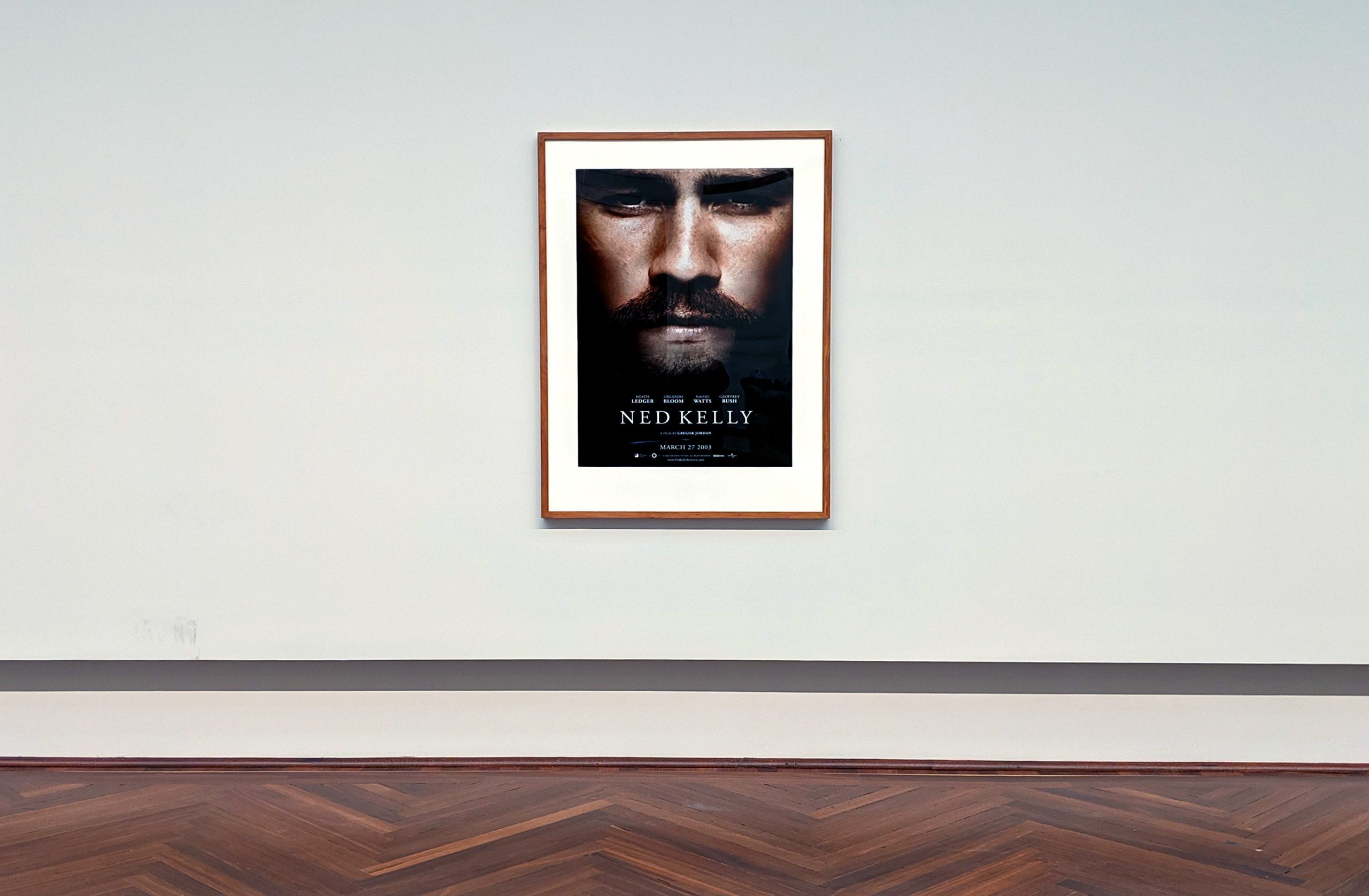
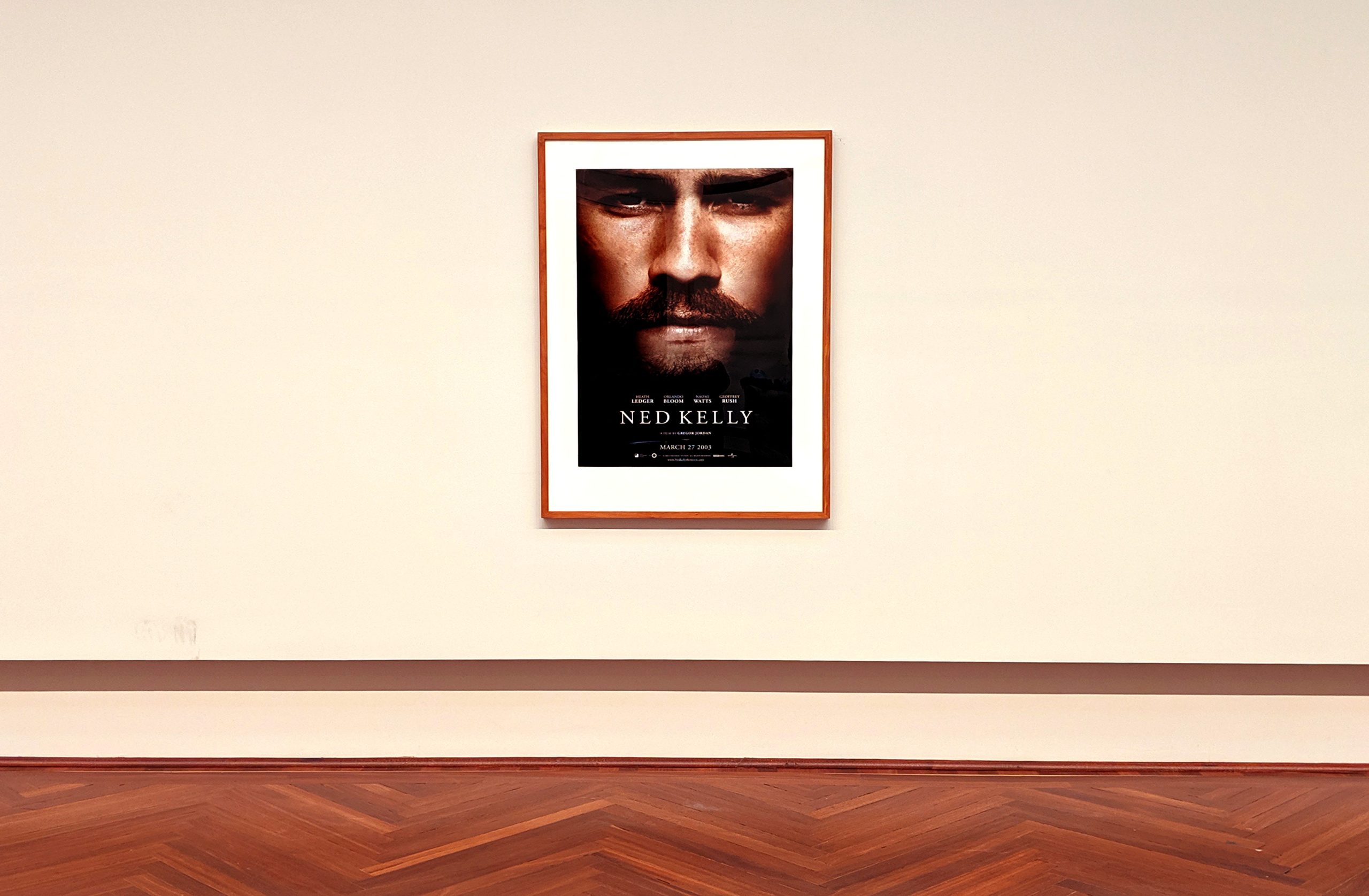
SUSTAINABILITY
Remote Building Monitoring
Gallery and museums stand to benefit considerably from remote building monitoring systems which incorporate intelligent lighting control.
- In large venues containing several diverse spaces, integrated lighting control systems can configure and control all lights from any point on the network as well as create reports on the status of all luminaires in the system.
- Security & insurance risk can be minimised. When valuable pieces are rotated, lighting scenes in several areas can be changed instantaneously to assist gallery staff in the process.
- Intelligent lighting can interface with security systems. For example, an intelligent lighting control system can be set to change to ‘security lighting’ after-hours. This may mean that lights dim to 20%, saving energy whilst maintaining a safe level of illumination for security and insurance purposes.
- Incorporating emergency and ‘exit’ luminaires into an integrated lighting control system means they can be monitored remotely for efficacy and repaired before there is a safety or insurance issue. Updating these luminaires to an intelligently controlled LED also means they can be adjusted to achieve the most energy efficient outcome possible.
Energy Efficiency
Lighting Control
Installing a lighting control solution can save up to 40% of energy costs.
Lighting control solutions utilising occupancy detecting sensors, scheduling and daylight harvesting can greatly increase cost savings.
LED Technology
Installing high-quality LED lights is one of the fastest ways to increase energy efficiency.
Not only do LEDs offer better light quality and more flexibility, they use approximately 75% less energy than incandescent light bulbs. LEDs also last 3 to 5 times longer than fluorescent bulbs and 30 times longer than incandescent bulbs.
While the cost of LED is higher initially, the up-front cost generally has a payback time of less than 1 year.
Extending the Life of Luminaires
Philips Dynalite’s ’soft start’ and surge limiting voltage regulation technologies protect lamps from high inrush currents and power surges, thus dramatically increasing lamp life.
Anything else to add?
DALI Longevity
Lightmoves provides DALI-certified lighting control systems to our clients.
The Digital Addressable Lighting Interface (DALI) protocol is an established global standard which ensures that lighting systems are enduring and future-ready.
DALI-certified systems provide longevity in the following ways:
- DALI is a universally adoptable, industry-wide standard that is not endorsed or owned by any particular manufacturer.
- The DALI-2 certification program, developed and maintained by the DALI Alliance, has created an ecosystem of interoperable products from multiple vendors. This ensures the long-term availability of compatible components, and avoids issues associated with vendor lock-in and reliance on proprietary solutions that may not be supported in the future.
- DALI is inherently flexible and lends itself to future-proof designs that extend the useful life of a lighting control system.
- Future-proofing is enabled at the luminaire level by the Zhaga-D4i connector system, which facilitates plug- and-play replacement of luminaire-mounted sensors and communication nodes.
- New extensions and certification programs (such as DALI-2, D4i and DALI+) are forward-looking and – crucially – standardised.
- Zhaga-D4i certification has enabled an ecosystem of interoperable luminaires and control devices. This allows luminaire owners to easily update their fixtures, protect their investment, sustainably extend the life of the luminaire, and keep pace with fast-moving developments in digital networking and sensing technologies.
- DALI-2 also provides backwards compatibility with earlier product generations.
- Two approaches have been developed that combine the DALI protocol with wireless technology:
- Standardised gateways approach: Enables wired DALI networks or D4i/DALI-2 luminaires to be incorporated into certain wireless ecosystems, such as Zigbee and Bluetooth Mesh.
- DALI+ approach: enables DALI to be used over wireless and IP-based networks.
- There are scenarios where a wired solution or hybrid wired/wireless solution is preferred or mandated. DALI provides choice and keeps future options open by enabling wired and wireless networks to operate together.
The Lightmoves Difference
ARCHITECTURAL ILLUMINATION
Though not directly lighting artworks within the space, architectural lighting can significantly contribute to the overall impression of a gallery or museum.
Architectural lighting can enhance a sense of grandeur and openness in gallery spaces. It can highlight unique architectural features or it can assist in creating blank canvas for exhibition pieces to shine.
Lightmoves provides architectural lighting solutions that feature intelligence and adaptability whilst also integrating seamlessly with the original architectural fabric of any museum or gallery building.

State Library Victoria Gallery
The State Library of Victoria completed a comprehensive refurbishment in 2019, including the development of a brand-new world-class exhibition gallery, Victoria Gallery, and the return of the iconic Queen’s Hall. Lightmoves integrated a mixture of lighting control and theatrical lighting solutions into the 160 year-old building, in keeping with the architects drive to future-proof every part of the project and improve functionality in key spaces.
Lightmoves was trusted to enhance the existing Dynalite lighting control system throughout the library, originally installed by Lightmoves in the early 2000s. New sections of the library, such as the Victoria Gallery and the Ideas Quarter, were integrated into the Dynalite system.
ARTWORK ILLUMINATION
Tapestry of Light
‘Tapestry of Light’, by Australian artist Irene Barberis, was first displayed at the Brussels Cathedral in 2017. The 36 metre-long tapestry took the artist 10 years to create and uses technological innovations in weaving. Under natural light, UV-light (use of fluorescent threads) and by night (use of phosphorescent threads), the tapestry offers different appearances.
Need input from team
Rochfort Gallery, Sydney
Rochfort Gallery is a dedicated space for Australian art located in North Sydney. The heritage building was painstakingly restored over two years, bringing it back in line with the 1920s classicism of its original context. This commanding space makes the most of soaring ceilings and exquisite natural light.
As a high-quality art exhibition, the building needed high-quality light fixtures. Lightmoves provided Philips LED display lighting and Space Cannon Allegra Spots (CRI 98) to illuminate artwork exhibited. Selecon Display LED Profiles (CRI 95) illuminate tricky areas requiring more definition.
Rochfort doubled their energy savings thanks to a gallery-wide LED solution. In addition, they have reduced costs associated with temperature control and maintenance of halogen lamps.
Glass Display Illumination
Museum of Chinese-Australian History
Need input from team
Flagstaff Maritime Museum
Need input from team
Melbourne Museum Gallery
The Melbourne Gallery, at the east end of the Melbourne Museum, is home to famous racehorse Phar Lap, shown in glass display casing.
Need input from team
Exhibits, Lighting and Theatre Technologies
Madame Tussauds Sydney
Madame Tussauds Sydney opened in April 2012. Lightmoves illuminated the wonderful world of wax models as well a range of interactive experiences.
Working under the direction of Madame Tussaud’s international design team, Lightmoves provided a range of solutions including custom truss, fire and water effects, custom LED curtains, architectural lighting, gobo projection, DALI control and a range of theatre technologies.
Australian Expo at the International Pavillion in South Korea, 2012
The Australian Expo at the International Pavilion represented Australia in South Korea in 2012. Lightmoves provided contemporary projection technology for the multi-media sculptures depicting Australia’s ocean currents. (Live Exploration of the Great Barrier Reef Connected via Real-time Video – ask Braham)
The Australian Pavilion consisted of four modules and was one of the largest pavilions in the International Pavilion section. As part of the main ‘ocean’ exhibit, it showcased a contemporary multimedia art sculpture equipped with cutting-edge projection technology that represented Australia’s ocean currents. The sculpture depicted the swell of the ocean, rising and falling between sets of waves. Visitors standing around it were able to view a variety of images of Australia, with each dimension of the sculpture designed to project different angles of the images. The Australian Expo won bronze for creative display.
Facade Illumination
National Gallery of Victoria (International Collection)
Lightmoves updated the façade lighting of the NGV in 2020. The project involved illuminating the huge east-facing wall, as well as the iconic ‘waterwall’ entrance and the overhanging perimeter of the roof. The project presented 3 main challenges.
The first was achieving an even colour wash across the massive scale of the eastern wall.
The second was providing NGV staff with super-flexible RGBW lighting control that integrated seamlessly into the existing lighting control system. It was important that the feature lighting across the facade could be adjusted to achieve various looks as the NGV International hosts a variety of large-scale exhibitions annually as well as evening concerts and events over summer.
The third challenge was achieving these outcomes using fixtures that could reside underwater – in the NGV’s famous moat! For more on Lightmoves’ bespoke solution, see custom works.
Check this copy with simon and team.
Melbourne Museum
Lightmoves completed lighting control and a variety of feature lighting throughout the Melbourne Museum, originally opened in 2000.
Need more information
Shrine of Remembrance
One of Melbourne’s most recognisable landmarks, the Shrine of Remembrance underwent a major upgrade in 2015. Lightmoves was commissioned by several different designers to provide lighting solutions for various areas including exhibition lighting, fibre optic and LED lighting, architectural highlights and overall lighting control.
The entrance courtyard is a striking addition to the Shrine . Lightmoves provided narrow red uplighters highlighting the jagged walls and custom red Digilin LED strips that highlight the entry glass panels dotted with red poppy patterns.
Royal Exhibition Building
The Royal Exhibition Building is one of Melbourne’s most treasured heritage buildings. In 2023, the Exhibition Building Promenade underwent an extensive refurbishment, including the addition of lighting to complement the building’s ornate facade.
Lightmoves completed lighting control for the project.
The refurbishment won the Award for Heritage Conservation at the Australian Institute of Architects Victorian Chapter Awards 2023.
Custom Works
Amama by James Turrell at MONA
‘Amama’, a light based installation from one of the world’s pre-eminent lighting designers, James Turrell, was exhibited at MONA in 2015.
MONA’s project manager Adam Meredith, having worked with our team previously, approached Lightmoves to provide a solution for the piece.
Lightmoves provided a solution that included the Philips Color Kinetics Colorgraze MX and Colorgraze EC, each customised to emit a Royal Blue colour specific to the needs of the artist.
National Gallery Victoria
Having worked with Lightmoves previously, the National Gallery of Victoria approached our team, needing a unique solution to light the facade and surrounding moats of the gallery.
Lightmoves supplied the control and lighting fixtures which are submerged in the waters of the moats. Utilising 103 Space Cannon Liquids, the outer walls of the NGV are bathed in a multitude of selected and programmed colours whilst also providing a brilliant dispersion of luminescence throughout the water.
Custom all-in-one power & data cables, with IP68 connectors and long tails, feed each of the Space Cannon Liquids from their positions around the moat to their respective control cabinets.
Each control cabinet was fitted with a custom fan-cooling solution designed by Lightmoves. The system maintains the desired operating temperature, minimising risk of drivers or controllers overheating.
Philips Dynalite network gateways and a front-end power management control solution were a vital component for the installation. A major requirement requested by the client was the ability to exert full control over all elements of the fixtures. This included powering the system down when not in use and having access to a large range of colour combinations.
The new lights immersed in the gallery’s moats have had their control system integrated with the current Philips Dynalite lighting control system that had been installed throughout the NGV by Lightmoves. The existing gallery-wide lighting system allows control of all the individual gallery spaces, including the moats, and can be controlled from a single location all running from Control Soft.
Along with beautifying the exterior, the RGBW colour fixtures enable the gallery to commemorate events and celebratory moments throughout the year.
Lightmoves Museum & Art Gallery Projects
- State Library Gallery
- Melbourne Museum Upgrade
- National Gallery of Victoria
- Scienceworks
- The Royal Exhibition Building
- City Gallery (Melbourne Town Hall)
- MONA – Amarna Exhibition by James Turrell
- Melbourne University Science Gallery
- Australian Racing Museum
- Museum of Chinese-Australian History
- Jewish Museum
- Flagstaff Hill Maritime Museum
- Shrine of Remembrance
- Maddam Tussauds Sydney
- Melbourne Aquarium
- Sydney Aquarium
- Queen Victoria Museum & Art Gallery
- Monash University Museum of Art
- Ballarat Fine Art Gallery
- Melbourne Planetarium
- AFL Hall of Fame
- Gold Museum Ballarat
- Australian Centre for Rare Arts and Forgotten Trades
- Immigration Museum
- NSW Rail Museum
- Tarrawarra Museum of Art
- Australian Racing Museum
- Museum of Victoria Children’s Gallery
- Abbotsford Art Gallery
- Warrnambool Gallery
- Ned Kelly Museum Beechworth
- North Melbourne Town Hall Arts Space
- George Adams Gallery
- Melbourne Grammar Memorial Hall
- Australia Expo China, Japan & South Korea
- The World Expo 2010
- Shepparton Art Gallery Upgrade
- Philip Island Park Antarctic Discovery


